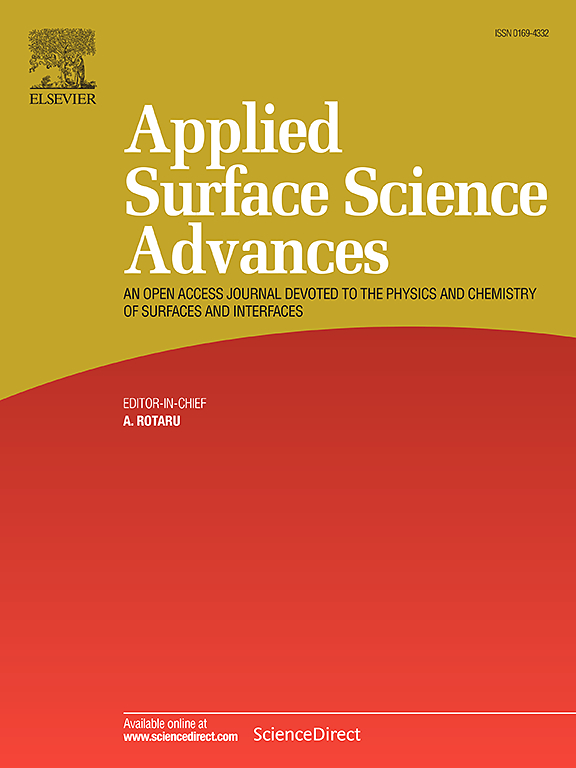Effect of SiC nanoparticles on the wear and corrosion resistance of Ag-Si composite coatings prepared by electrodeposition technique
IF 8.7
Q1 CHEMISTRY, PHYSICAL
引用次数: 0
Abstract
This study aims to improve the corrosion and wear resistance of Ag-Si-SiC composite coatings by pulse-reverse electrodeposition and the addition of SiC nanoparticles. The effects of important parameters such as SiC nanoparticles, direct current, and pulse reverse electrodeposition on the microstructure, wear, and corrosion resistance of Ag-Si-SiC coatings were investigated. The coatings were evaluated using different characterization techniques such as SEM, EDS, XRD, XRF, LSV and electrochemical analysis. In addition, the pin-on-disk method and Vickers microhardness were developed to investigate the wear behavior. The coating process resulted in coatings with a target thickness of 30–40 µm, which were accompanied by a significant improvement in surface quality. This improvement was reflected in the roughness reduction from 251.4 µm to 107.8 µm. The results of the analyses showed that coatings with a Si content of 0.3 % exhibited a reduction in grain size from 20 µm to 1.2 µm and a subsequent reduction in corrosion current strength from 478×10−8 A.cm−2 to 7.31×10−10 A.cm−2 in the artificial human sweat electrolyte. The addition of 4 g/L SiC nanoparticles resulted in increased wear resistance, as indicated by a decrease in the friction coefficient from 0.5 ± 0.05 to 0.4 ± 0.03 while maintaining the same corrosion resistance. The remarkable performance of the coatings was observed under exposure to corrosive ammonium sulfide electrolytes and artificial human sweat, illustrating the effectiveness of pulsed reverse electrodeposition in producing dense, fine-grained structures of Ag-Si-SiC composite coatings, resulting in increased mechanical and corrosion resistance.
SiC纳米颗粒对电沉积法制备Ag-Si复合镀层耐磨损和耐腐蚀性能的影响
本研究旨在通过脉冲反向电沉积和SiC纳米颗粒的加入来提高Ag-Si-SiC复合镀层的耐蚀性和耐磨性。研究了SiC纳米颗粒、直流电流和脉冲反向电沉积等重要参数对Ag-Si-SiC涂层显微组织、耐磨性和耐蚀性的影响。采用SEM、EDS、XRD、XRF、LSV和电化学等表征技术对涂层进行了表征。此外,采用销盘法和维氏显微硬度法对其磨损行为进行了研究。涂层工艺使涂层的目标厚度达到30-40µm,表面质量显著提高。这种改进体现在粗糙度从251.4µm降低到107.8µm。分析结果表明,当Si含量为0.3%时,涂层的晶粒尺寸从20µm减小到1.2µm,腐蚀电流强度从478×10−8 A.cm−2降低到7.31×10−10 A.cm−2。添加4 g/L SiC纳米颗粒后,摩擦系数从0.5±0.05降低到0.4±0.03,同时保持了相同的耐蚀性。在腐蚀性硫化铵电解质和人工汗液中观察到涂层的显著性能,说明脉冲反向电沉积在制备致密、细晶结构的Ag-Si-SiC复合涂层方面的有效性,从而提高了机械和耐腐蚀性。
本文章由计算机程序翻译,如有差异,请以英文原文为准。
求助全文
约1分钟内获得全文
求助全文

 求助内容:
求助内容: 应助结果提醒方式:
应助结果提醒方式:


